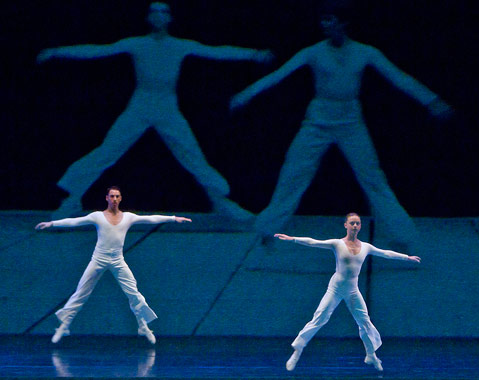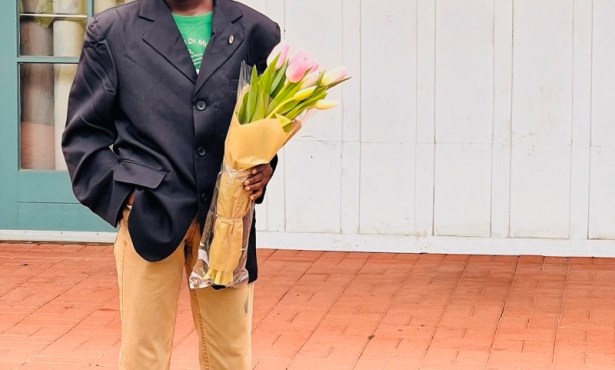Lucinda Childs’s Dance at the Granada
Seminal Work of Minimalism Challenges, Rewards

According to Elie Weisel, the opposite of love isn’t hate; it’s indifference. That’s good news for Lucinda Childs, who more than 30 years after the premiere of her seminal work Dance still has audiences leaving in droves before the show is over. Clearly, she isn’t leaving people cold.
Last Tuesday, Childs brought a revival of Dance to the Granada. It’s a minimalist masterpiece, set to a Philip Glass score and accompanied by Sol LeWitt’s black-and-white film footage of the original cast of dancers. All three elements—the dance, the music, and the film—are repetitive and mesmerizing, practically demanding the viewer surrender any agenda and drop into an altered state. At the time of its premiere in 1979, the minimalist movement was gaining momentum in visual art. It didn’t make Dance particularly palatable then, and some of that resistance lingers. Part of it, no doubt, is the intensity of the score: a relentless cascade of chords that follow binary and tertiary structures, at times seeming to call out to the listener; “fix it fix it fix it!” one refrain seems to cry. Of course, the only true request Dance makes of the audience is to bear witness, and those who accept the challenge have the chance to drop into a sustained meditation of a rare and gratifying kind.
Dance is divided into three movements: a solo framed by ensemble sections. The transitions are sudden, just as the tumbling, torrential score gives no warning before it plunges off a cliff. Originally, LeWitt’s footage depicted the same dancers who performed live; today the viewer’s eye jumps back and forth from the live performers to those of 30 years ago, noting the differences; a certain looseness and casual composure has been replaced with greater precision and formality.
It’s natural to wonder at first whether anything is going to happen here. Dancers chassé across the stage in pairs, moving left to right, their footwork changing almost imperceptibly as their patterns grow more complex. Like their filmed counterparts, they wear white. Occasionally, the light shifts from yellow to blue or red. Sometimes the film hovers above the dancers’ heads; sometimes it shares the same register so that live and recorded performers appear to share one stage.
In 1979, Dance was criticized for its uncomplicated, everyday movement, yet it’s a highly technical, exquisitely synchronized operation. Dancers shoot past each other with only inches to spare. They leap and spin in perfect unison, whirling in and out of formation in kaleidoscopic patterns. And in a world where all too often we’re asked to switch our attention from one thing to the next, Dance offers a rare chance to stay with one sustained structure, soaking up the joy, the grace, and the beauty of bodies in motion.



